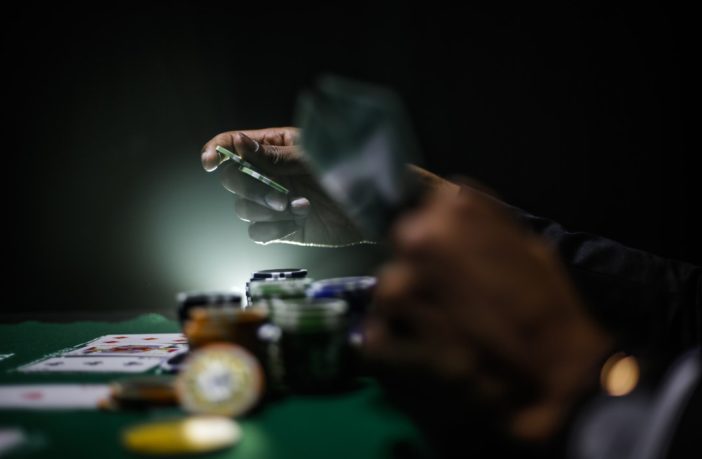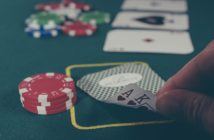Are you a poker player who has already mastered the basics of the game? You’re probably looking for a way to break into tournament play. To succeed, you’ll need to up your game.
Believe it or not, the best way to do that is actually by reading some poker books. These will introduce you to the play styles, odds, and theories that every pro already knows. At the very least, it’ll get you on an even playing field for your first real tournament game.
Wondering where to start? Look no further! We’ve found you the 5 best poker books to learn the theory of poker and the best poker strategy.
Your Invitation to the Best Online Pokies in Australia
Like a punt on the slot machines?
Our top rated slots for October 2019 are the smash-hit online pokie sites: Ruby Fortune and Jackpot City Casino.
These sites include some impressive matched bonuses – up to $750 and $1600 respectively! With the potential for some seriously big wins, here’s your chance to get a piece of the action:
1. The Theory of Poker by David Sklansky
David Sklansky gave up his day job (as an actuary) to pursue poker full time, and he’s done rather well for himself. He has won over $1 million dollars, and his achievements include a winning bracelet in the World Series of Poker three times.
A lot of people consider this book to be a dictionary of the game. It’s able to remain timeless by focusing on basic logic and maths principles that drive decisions in the game.
It’ll teach you about the importance of bluffing, deception, the free card, slowplaying, position, and reading hands. And it covers more than hold ’em: it includes five-card draw, seven-card stud, razz, and lowball draw.
It will quite literally put you on a different level and separate the casuals from the serious players. After reading this book, you’ll start to think like the pros — at least, on a basic level.
But be warned: this is not for the faint of heart. It’s not written to entertain, but to teach — which means a lot of maths equations and probability. And nothing is watered down: it might take you a few tries to be able to understand his point.
2. Caro’s Book of Tells: The Body Language and Psychology of Poker by Mike Caro
If you want to learn how to read your opponent’s body language, this is the best of these poker books for you.
Mike Caro is a professional poker player who has banked some serious cash in the World Series of Poker on seven occasions. He’s actually perhaps best known for his pioneering role in poker strategy and his many authored articles and reports on poker.
The book itself covers 20 basic tells, as well as how to interpret each one based on the current conditions (and how to exploit them). He also released an updated version that delves deeper into analysing these tells. It also includes more photos to better illustrate his point.
You’ll learn what some of these tells mean, like shuffling a hand, double checking, glancing at chips, sudden interest, protecting a hand, and fearlessness are among them.
You’ll also learn about some general tells, like how they choose a seat, gaining information, and voice inflexion.
What might be the book’s best accomplishment is showing you how to spot fake tells. It’s essential to know if your opponents are trying to trick you to throw off your game. This section, called “Tells for Actors”, boils down to taking in the opposite meaning: weak means strong and strong means weak, for example.
But be warned that most professional poker players will have already read this book, so it’s best used in lower stakes tournaments. Although it can also warn you what to look for in your own behaviour — or you can read our guide on that matter.
3. Every Hand Revealed by Gus Hansen
This book isn’t a “how-to” guide as much as a window into Gus Hansen’s mind. Hansen is an amazing poker player also known as “The Great Dane” and “The Madman”.
He’s has won over $10 million, and at one point was ranked the 11th best player on GPI’s list. His accolades include being a three-time World Poker Tour champion and holding five total international titles.
It covers all of the choices Hansen made that led to his victory at the 2007 Aussie Millions (which is one of Australia’s 5 biggest annual tournaments). It covers in detail over 300 hands where he describes every single decision he made and why he made it. The book manages to be direct while also being a page-turner.
His loose aggressive play style is unconventional and a bit unorthodox.
But reading this book will bring you ahead of the game by questioning some of the conventional strategies used by poker players.
If you want to become a no-limit hold ’em pro, read this book to learn things like when to bluff, how prize structure commands play, and a peek into the stats and odds behind different hands. And it manages to be as entertaining as it is informative.
This is likely the best book on the list for beginners. It is able to use concrete examples, avoiding the abstraction that other books on the list present.
These are real methods that have been proven to work and keeps a huge emphasis on entertainment. Turns out there’s actually a method to The Madman’s madness.
4. Harrington on Hold’em (All Poker Books) by Dan Harrington
This book is actually divided into three separate volumes but taken together, they’re classic poker reading. Dan Harrington won the World Series of Poker in 1995 and was once ranked the 8th best poker player in the world. He’s managed to win over $6 million over the course of his career.
His first volume, Strategic Play, was definitely the most influential.
This book helps you think about all stages of your hands, including pot odds, reading hands, how to change your approach based on the turn or the river, and many more strategies. He was also the first poker strategist to discuss M-ratios, which are still used in the professional poker world today.
The second volume focuses entirely on the end stages of a tournament.
That’s right — this part is so complicated it warranted an entirely separate book filled with unique strategies to use towards the end of the tournament. Learn how to handle yourself as the blinds and antes keep on growing, and learn more about the concept of heads-up play.
Finally, he has a third volume called The Workbook. This one is unique because similar to Hansen’s book, it dives deep into hand analysis. It actually covers some of the hands of the pros during real tournaments.
If you follow the questions in the book, there’s even a section in the back called “Categorizing your Errors”. This section allows you to see why the answer you chose was right or wrong. So it’s truly a workbook in that it contains multiple choices and an answer key.
5. Super/System (How I Won One Million Dollars Playing Poker) by Doyle Brunson
This book is authored by Doyle Brunson (who actually just retired last year). It was actually really controversial when it was first published. It was actually so thorough that it exposed a ton of industry secrets to the point where a lot of them were no longer viable in tournament play.
Be warned, this book is long — 600 or so pages, to be precise. When it was first released in the 70s, it was actually $100 dollars (don’t worry, the price has decreased by now).
Today, a lot of players consider this to be the poker Bible. But that doesn’t mean it’s boring: it also talks about some of his life stories from his early poker days. It includes contributions from other top poker players and covers a variety of games so you can delve deep into the game’s foundations.
The strategy sections are — reading your opponent (written by Mike Caro, of course), seven-card stud, Lowball, seven-card stud high-low split, limit Texas hold ’em, and no-limit Texas hold ’em. There’s also a list of probabilities and statistics, as well as real-world scenarios to see how they play out.
However, it’s so well-read that this aggressive style has many counter-strategies developed for it, so be careful. Despite this, it’s still a great way to learn the fundamentals.
Ready to Gamble?
There are so many great poker books, so it’s hard to choose just a few. But if you get to read these, you’ll be leaps and bounds ahead of your casual poker-playing friends.
Now that you’ve found your poker books reading list, it’s time to get out there and practice! Are you in Australia and wondering where you can find your next game?
We’ve got you covered with this inside guide to poker in Australia.







